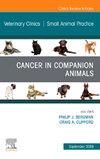低氧血症的快速参考。
IF 2
3区 农林科学
Q2 VETERINARY SCIENCES
Veterinary Clinics of North America-Small Animal Practice
Pub Date : 2025-10-10
DOI:10.1016/j.cvsm.2025.09.001
引用次数: 0
摘要
本文概述了一个结构化的方法来诊断和管理低氧血症的狗和猫使用脉搏血氧仪和动脉血气(ABG)分析。它详细说明了主要原因-低FiO2,低通气和静脉杂质-并解释了像A-a梯度,氧分压/FiO2比和呼吸速率氧合指数等工具如何帮助评估严重程度和指导治疗。强调逐步ABG解释以定制氧支持,从常规方法到高流量氧治疗或严重情况下的机械通气。持续监测可改善预后并为护理升级提供信息。本文章由计算机程序翻译,如有差异,请以英文原文为准。
A Quick Reference on Hypoxemia.
This text outlines a structured approach to diagnose and manage hypoxemia in dogs and cats using pulse oximetry and arterial blood gas (ABG) analysis. It details the main causes-low FiO2, hypoventilation, and venous admixture-and explains how tools like the A-a gradient, partial pressure of oxygen/FiO2 ratio, and respiratory-rate oxygenation index help assess severity and guide therapy. Stepwise ABG interpretation is emphasized to tailor oxygen support, from conventional methods to high-flow oxygen therapy or mechanical ventilation in severe cases. Continuous monitoring improves prognosis and informs escalation of care.
求助全文
通过发布文献求助,成功后即可免费获取论文全文。
去求助
来源期刊
CiteScore
3.80
自引率
0.00%
发文量
123
审稿时长
18-36 weeks
期刊介绍:
Veterinary Clinics of North America: Small Animal Practice offers you the most current information on the treatment of small animals such as cats and dogs, updates you on the latest advances, and provides a sound basis for choosing treatment options. Published bi-monthly—in January, March, May, July, September, November—each issue focuses on a single topic in small animal practice, including endocrinology, fluids and electrolytes, gastroenterology, infectious diseases, neurology, oncology, urology, respiratory issues , surgical information, small animal behavior, laboratory medicine, imaging methods, and nutrition.

 求助内容:
求助内容: 应助结果提醒方式:
应助结果提醒方式:


